The Complete Guide to Touring The City of David
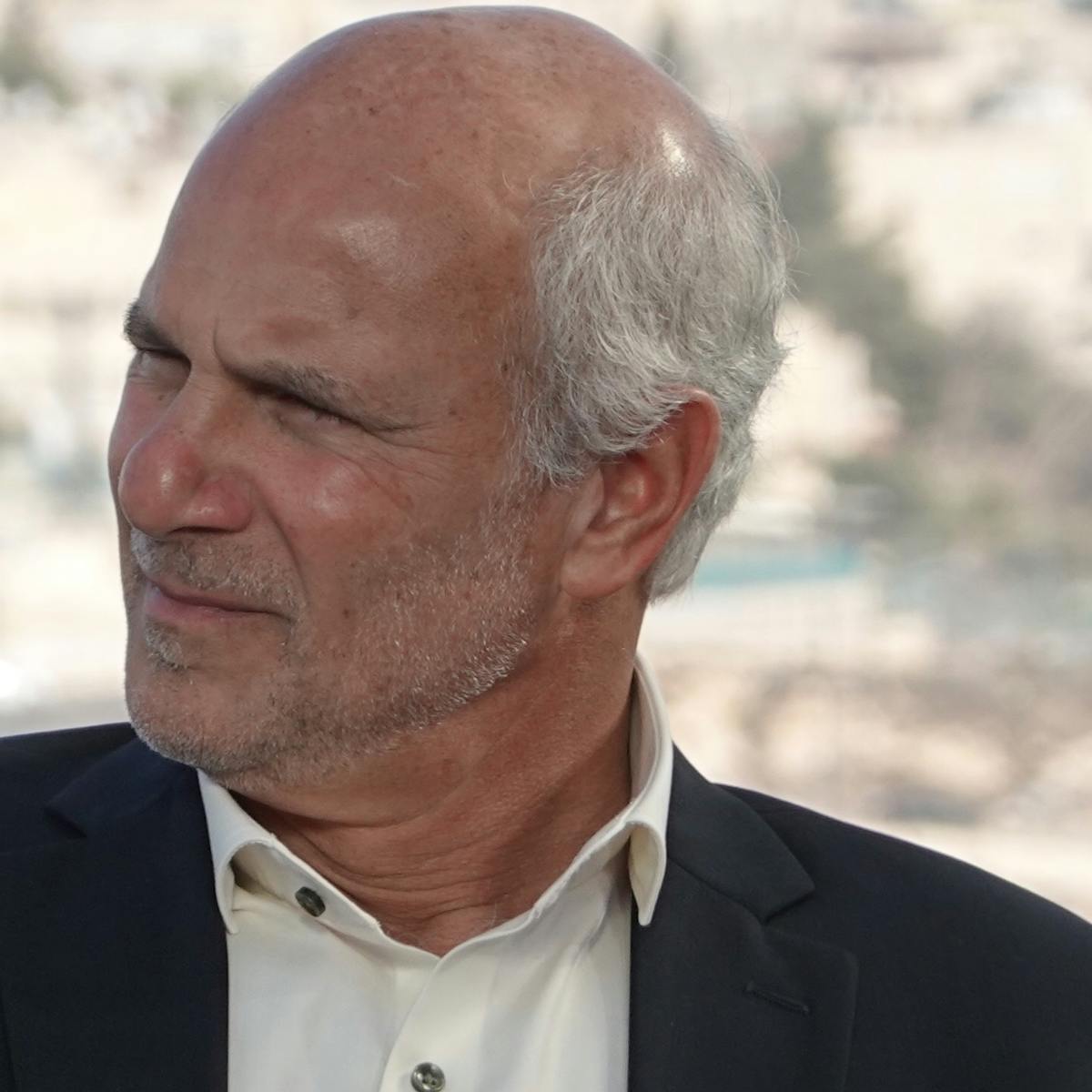
“And the king and his men went to Jerusalem against the Jebusites … who spoke to David, saying, ‘you shall not come in here; but the blind and the lame will repel you…’ Nevertheless, David took the stronghold of Zion… and called it the City of David.”
- 2-Samuel 5:6-9
What Is The Importance Of The City Of David?
Dating back nearly 3,000 years, the above scripture verse is the very first time that the City of David is mentioned in the Bible by name. Appearing earlier in older stories of the Old Testament under the names SALEM (Genesis 14), and JERUSALEM (Joshua 15), the city was destined to become not only the Capital City of the Kingdom of Israel but also the heart of the story of God’s eternal plan of redemption.
From Father Abraham to King David, all the way to Jesus of Nazareth and the story of His life, death, resurrection and promised return, the City of David (and Jerusalem which developed around it over the centuries) has been central to God’s activity on earth. The unfolding of these miraculous events over thousands of years points to a future time, to the very end of the age. At that time, as ancient Bible prophecies predicted, Jerusalem would experience a “resurrection” from her extended historic demise, be rebuilt and restored to her past glory, and gain the world’s attention once again.
Is it possible that we are living in those days? Could it be that modern-day archeological discoveries in the City of David and in Jerusalem today confirm these ancient biblical texts and prophecies? Speaking of the City’s promised restoration, Isaiah called out long ago, saying, “Awake, awake! Put on your strength, O Zion; Put on your beautiful garments, O Jerusalem… Shake yourself from the dust…” (Isaiah 52:1-2). Today, perhaps more than in any other place in Israel, the City of David’s extensive archeological discoveries fulfill this scripture as a modern-day reliable witness pointing to the eternal reality, authority, and credibility of the Word of God.
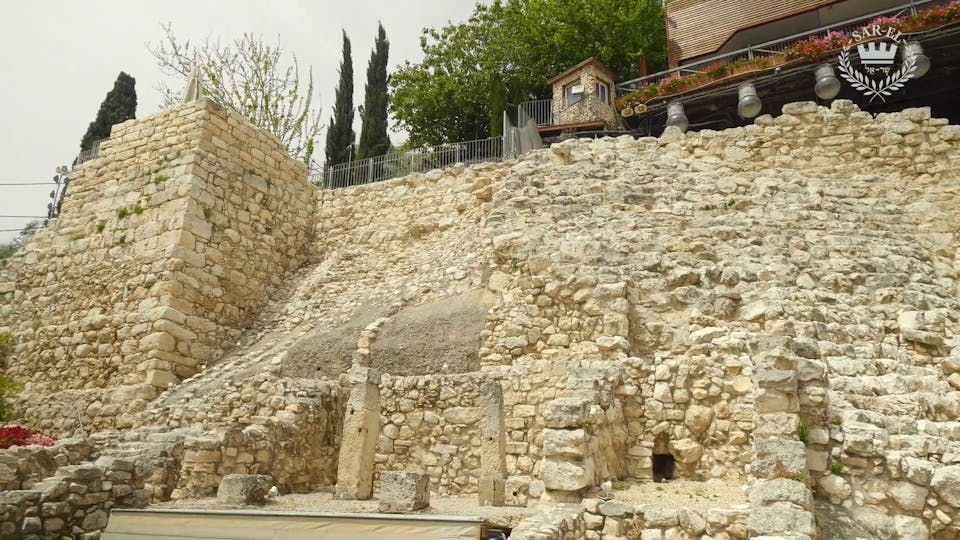
Where is The City of David Located?
Situated on a narrow mountain ridge just a short distance from Temple Mount (Mt. Moriah) in Jerusalem, the historic and biblical City of David is actually located outside of the impressive Old City walls. As you might remember, these walls were constructed about 450 years ago by the Ottoman Emperor “Suleiman the Magnificent” who ruled over the entire Middle East. Wanting to establish strong defenses around the strategic city of Jerusalem, and since only the Old City was considered necessary in his view, he ignored the south-eastern district of the city that dated back to the Canaanite pre-Israelite period. Thus, the City of David’s original location ended up “outside” of the scope of Jerusalem for hundreds of years, and, as is often the case, “out of sight, out of mind.” Yet, the time of restoration was nearing.
To the north, the City of David is neighboring the Old City of Jerusalem and Temple Mount; to the east, it is flanked by the Kidron Valley and the Mount of Olives; to the south is the Valley of Hinon; and to the west is Mount Zion with its impressive history, including the traditional location of the Upper Room and the Last Supper. The entire area is rich with biblical history and appears many times in numerous biblical references from the early Israelite conquest of Canaan all the way to the final events that will precede the coming of God’s Kingdom to earth. No wonder a visit to the City of David today is a “must” for every pilgrim’s itinerary to the Holy Land.
The Biblical History of the City Of David
The narrow mountain ridge that became known as the City of David was first recognized in the Bible as a fortified Canaanite stronghold that was controlled by the Jebusite tribal kingdom. This claim not only appears in the Bible but has also been backed up by substantial archeological findings at the extensive excavations of the City of David. According to the Book of Joshua, the city was fought over during the early Israelite conquest of Canaan, yet it fell back into Jebusite hands. It remained a Canaanite fortress until David took it in battle nearly 3,000 years ago, according to the Book of 2 Samuel.
David ruled over the southern kingdom of Judah for seven years from His first Capitol, the City of Hebron. Yet when the northern tribes of Israel asked him to extend his reign over them as well, David had to move north in order to re-establish his Capitol City in a more central and strategic location that would straddle both Judah to the south as well as the rest of the tribes of Israel to the north. Jerusalem was the perfect location, containing the two key elements that every ancient Capitol City required, water (from the Gihon Spring below) and strong defenses.
It was after David’s amazing conquest that the name of the city was changed to the “City of David,” with its secondary biblical title being the “Stronghold of Zion.” With David’s throne firmly established in his new Capitol City, and with the first glorious Temple of Israel erected by his son Solomon, the City became Israel’s political and spiritual Capitol, serving as a global focal point of worship to the God of Israel. Appearing thousands of times in our Bibles, both in Old as well as New Testament accounts, Jerusalem, and the City of David in its heart, became pivotal to historic battles, imperial conquests, great worship services, political aspirations, much intrigue, and prophetic expectations for thousands of years.
Eventually, with destructive and continual wars raging with the many empires that sought to rule the region, the ensuing devastation, foreign occupations, national exile, and repeated earthquakes, the area of the historic City of David was deserted, sank into oblivion, and turned to rubble.
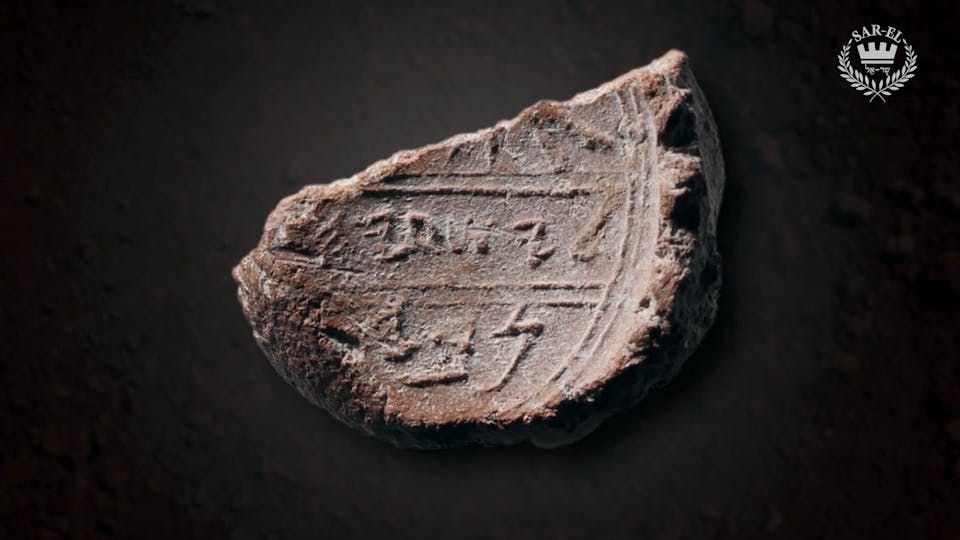
The Modern History of the City Of David
For a very long time, the story of the City of David and of Jerusalem was kept to the biblical accounts only, with very few supportive outside sources backing it up. The dust and gloom of history seemed to cover up the ancient truths as the original site of David’s Capitol City vanished from view for many centuries.
Following extended neglect and ruin, some intentional and some incidental, the area was settled by Yemenite Jewish families during the early years of the Jewish immigration to the Land of Promise. Fearing for the safety of these Jewish families during the Arab Revolt of the 1930s, the British authorities, which held the International Mandate over the region at the time, evacuated these families to the relative safety of the walled City of Jerusalem, creating in fact the famous Jewish Quarter.
1948 brought the end of the British Mandate and the rebirth of the State of Israel, with growing waves of Zionism bringing more Jewish people to their ancient homeland. Nineteen years later, in 1967, after the victory of the Six-Day-War, Jerusalem was reunited and returned to Israeli sovereignty. It was during the following decades that substantial excavations were initiated in the ancient site of the City of David by The “Ir (City) David Foundation” and “Israel’s Antiquities Authority.” These efforts brought to light and analyzed layers of excavated treasures that “went down” through numerous civilizations including the Ottoman, Muslim, Byzantine, Roman, Greek, Persian, Israelite, and Canaanite, including the First and Second Temple periods.
Today, the City of David archeological center tells the story of the original Jerusalem not merely with pen and paper, but with fascinating archeological evidence backed by science that points directly to the accuracy and credibility of the biblical texts.
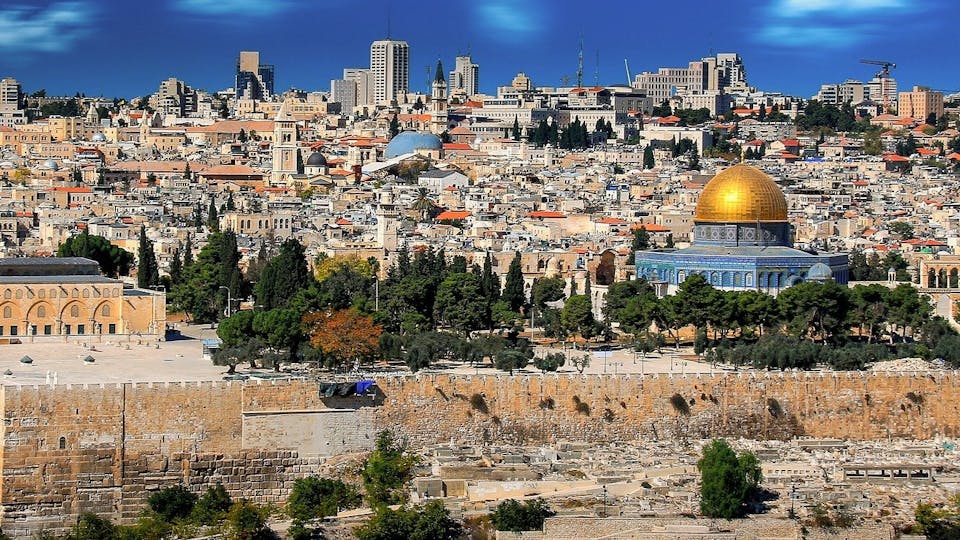
7 Spectacular Archeological Findings at the City Of David
- Hezekiah's tunnel which was dug during the Babylonian siege of Jerusalem is known all over the world. It was during the 701 BC campaign of King Sennacherib of Babylon that the Judean King Hezekiah built an extended protective wall around Jerusalem. However, he also needed to secure the City’s water supply which originated from the Gihon spring in the valley below if the City was to survive the approaching siege. In record time, executing an incredible engineering project, a deep sub-mountain tunnel was dug by hand, 533 meters long (nearly 1,500 feet), snaking deep underneath the city with a precise rate of decline all the way to the Gihon Spring in the Kidron Valley below. The water supply was secured, and today, in the City of David site, visitors can safely walk through this excavated underground ancient tunnel and relive the biblical story.
- Shiloah Pool which was discovered at the southern tip of the City of David district was originally constructed nearly 2,000 years ago during the period of King Herod. As excavations and research progressed, it was discovered that this large and elegant pool served Jerusalem’s Jewish pilgrims as they prepared themselves through ritual bathing before ascending to the Temple complex to offer sacrifices and worship God. This pool is mentioned in the Gospel of John chapter 9 in the story of the opening of the eyes of the man who was born blind, and it gained importance with the increasing volume of pilgrims drawn to the Temple as well as its role during the water pouring Temple ceremonies. It was then that water was drawn from the Pool of Shiloah and brought up ceremoniously by Priests and Levites to be presented on the altar of God at the Temple.
- The Pilgrim Road that connected the Shiloah Pool to the Temple complex on Temple Mount served as the main business and Pedestrian Street for Jerusalem’s pilgrims and visitors. Shops lined up both sides of this paved Herodian Road which today runs many feet beneath the street level, stretching all the way from the Shiloah Pool to the Temple Mount. This Pilgrim Road is now open for visitors who can literally walk through this original street as did the pilgrims of old.
- King David’s Palace is believed to have been located at the northeastern side of the City of David overlooking the Kidron Valley with a magnificent view of Temple Mount. This would have been a very logical choice for someone who was already planning a northern expansion of the city. Remember that King David purchased the threshing floor from Araunah the Jebusite (2 Samuel 24:18–25) which was located north from the City of David on the top of Mount Moriah, a plot of land that became the site of both Israel’s Temples in time.
- A Phoenician pillar that was discovered in the City of David excavations became the source of much excitement as it connected the biblical text to actual physical findings. The Book of 2 Samuel chapter 5 describes how King David, after capturing the city from the Jebusites and making it his own Capitol City, hired renowned carpenters and stonemasons from his friend the King of Tyre and commissioned them to build his palace at the City of David. No doubt, these professionals brought with them the influence of Phoenician art and culture which found its way to the site of the City of David with the discovery of this Phoenician Pillar in the middle of an Israelite City structure.
- Clay bullae (seals) were found in the City of David excavations during the 2005 and 2008 digging seasons. These official seals date back to the sixth century BC, and bore the names of two government officials who served in King Zedekiah’s administration just before the Babylonian siege and invasion of Jerusalem. One seal bears the name “Gedaliah ben Pashur,” and the second one bears the name “Yehuchal ben Shelmayahu.”
Amazingly, both names appear in the same Bible verse in the Book of Jeremiah 38:1 where these officials are mentioned by name as some of those who didn’t have the faith or courage to accept Jeremiah’s severe warnings concerning the inevitable Babylonian invasion and Israel’s exile. Providence and history made sure that their names were literally immortalized in hardened clay bullae that were to be found in the same City by future descendants of the Israeli exiles who returned to the Land of their fathers 2,600 years later.
7. Breaks of the drainage channel & a Roman sword were discovered at the ancient Pilgrim Road excavated deep beneath the present-day site of the City of David. These findings confirmed the First Century report of the Jewish historian Josephus Flavius who described the Roman invasion of Jerusalem in his book “Wars of the Jews,” Volume 6. Describing the terrible fate of the remaining Jewish residents of Jerusalem who tried to find refuge in the drainage channel (the sewer system) of the City, Josephus wrote, "… all who showed themselves had been either slain or taken prisoner by the Romans … the victors instituted a search for those in the tunnels … tearing up the ground, slew all whom they met … upwards of two thousand dead..."
The Roman sword that was found in the broken-up drainage channel still had its leather sheath partially intact, testifying of the distant past horrors when the Roman military machine, driven by unbridled hatred and anger, massacred nearly one million Jews during that war, burned down the Temple, destroyed the City of Jerusalem, and rebuilt it again as a pagan city under a new name.
This discovered drainage channel is over 700 meters long (roughly 2,100 feet) and was constructed at a standard that was unusual even for its time underneath the famous Herodian Street. Its purpose was to collect and channel the runoff water flowing down the slopes of Mount Zion and Temple Mount into a reservoir at the bottom of the valley. The drainage channel protected the road above from flooding while keeping the pilgrims dry and clean. Today, it tells their story.
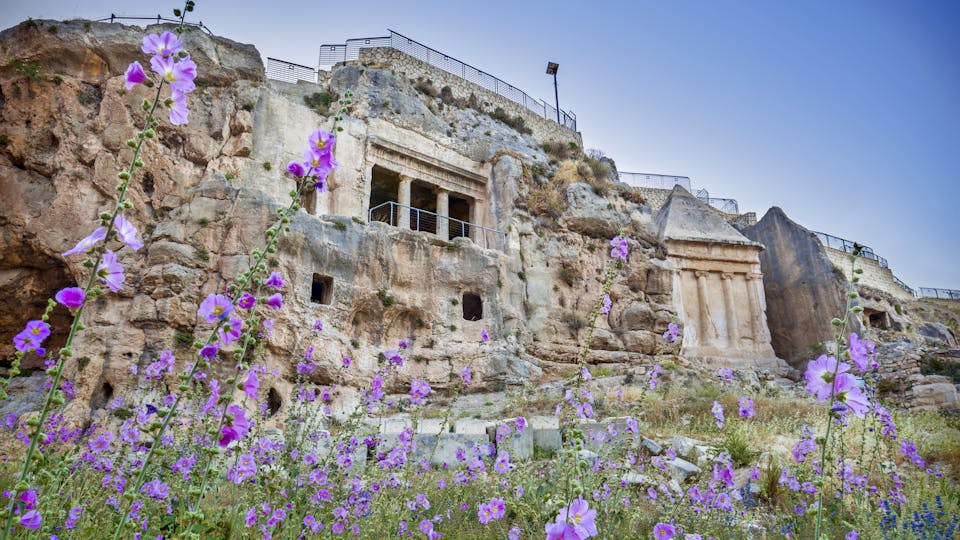
16 Additional Important Findings at the City Of David
- Bulla bearing the name Bethlehem, the earliest mention of that name outside of the Bible.
- Rare Jewish Menorah etching was found beneath the Herodian Road.
- A rare golden bell with an attached loop was also found in the drainage channel below the Herodian Road, believed to be one of the bells attached to the hem of the High Priest’s garment.
- A gold earring, inlaid with pearls and precious stones, was discovered inside a Roman building.
- Pottery shards from the Chalcolithic Period (4500-3500 BC).
- 34 capstone weights, 18 of them were having the common weight of the Biblical period.
- Metal pails, pickaxe & pipe (construction tools).
- Babylonian arrowheads from the 6th century BC testifying of the Babylonian invasion.
- Burnt expensive furniture testifying luxurious residential buildings and rich culture.
- A Hebrew inscription dated to the Israelite period (8th century BC) was discovered near the southern exit of Hezekiah’s Tunnel.
- House of Ahiel, the remnant of a residential home featuring storage jars and a toilet.
- A rich assortment of bullae (clay seal impressions).
- An inscription saying “Yahu which is on the house” was discovered on the façade of a burial cave from the First Temple period.
- A small, granite figurine of a Roman boxer was discovered inside a residential home from the Roman period.
- A half-shekel coin was discovered during the sifting of archaeological rubble from the Temple Mount.
- A treasure cache of 264 gold coins was discovered inside a wall of a Byzantine building, speaking of great financial transactions and treasuries that were present during the Byzantine era.
These and many more are waiting to be discovered and enjoyed when you arrive at the City of David for an experience that will deeply impact your views and perceptions of God and His purposes as reflected in the history of Jerusalem and of the City of David. Bringing biblical themes to life while placing ancient history on display, the City of David is one of the most sophisticated and remarkable archeological sites in the world today as it sheds light and revelation on ancient realities which were hidden from sight for thousands of years. Shaking off the dust of centuries, let the City of David teach you afresh the story of God from a perspective you have never seen before.
Be sure to contact our Sar-El operators who are standing by to assist you to plan your next visit to the Holy Land with an unforgettable experience at the City of David. Our team is waiting for your call and looks forward to seeing you in Israel soon.
* Image credits are from the City of David Archive, and photographer Kobi Herati.